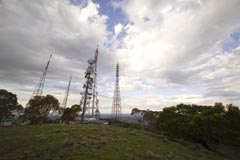 Overnight at Mobile World Congress, Telstra announced that they would be launching an LTE network using the 1800MHz spectrum. Here are five reasons why this is brilliant news:
Overnight at Mobile World Congress, Telstra announced that they would be launching an LTE network using the 1800MHz spectrum. Here are five reasons why this is brilliant news:
Extra data capacity
Telstra’s ever-reliable Next G network is signing on more and more mobile data users every month – their recent mid year financial results saw the addition of half a million mobile broadband customers in six months. By launching an LTE network to run alongside their HSPA+ Next G network, they will be able to offer faster speeds to more consumers without bogging down their network with overuse.
Telstra were quick to say that the LTE network wasn’t about speed so much as it was about adding capacity so more people could enjoy high speeds simultaneously. Given how much Vodafone and Optus have struggled with demand following high take up of mobile data services, it’s good to see that Telstra is fixing the problem before it even begins…
The other benefit is that by adding a separate LTE network, Telstra is essentially relieving the strain on NextG, making their HSPA+ network more reliable at the same time. It’s win-win!
It’s not going to cost an arm and a leg
Previously, it was thought that LTE in Australia would be rolled out using frequencies purchased from the sale of the analog TV spectrum. But Telstra has managed to avoid the huge costs that would have been involved from such an operation by reusing the 1800MHz spectrum, which was predominantly used for 2G voice calls back in the pre 3G days.
What this means is that instead of needing huge amounts of resources to roll out new towers, install new infrastructure and consequently need to charge lots of money in order to make a profit, the costs of rolling out LTE in Australia is estimated to be half a billion dollars less thanks to using the 1800MHz spectrum. Or in other words, we won’t have to pay a significant premium to use the network so that Telstra can make a profit. Sure, there’ll probably still be a slight premium, but that’s the price you pay for quality.
It’ll be here before you know it
While the fact that Telstra’s decision to use the 1800MHz spectrum means they can save a lot of money, it also means the network will be operational before we know it. The fact that it will be live before the end of the year is amazing – just think about how long it’s been since any of the other networks have offered a speed boost to their HSPA network. That Telstra will not only continue to push speeds up on Next G, but also launch a completely new LTE network within a year confirms their place as the strongest Telco in Australia – even if they did get a huge leg up to get there from the Government…
The network will be upgradeable to LTE-A
All over the world, mobile networks – including Telstra – are lying to consumers telling them that LTE is a 4G network. It’s not. LTE is more like a 3.9G network. The real 4G network is what’s known as LTE Advanced, or LTE-A. But knowing that doesn’t mean you should be disappointed – the good news is that LTE should offer a relatively easy upgrade path to LTE-A, just like 3G easily jumped up to HSPA.
While it’s still a little bit early to expect Telstra to turn around and upgrade their yet-to-launch LTE network, given the fact that Telstra’s been pushing speed increases of their HSPA network over the past few years, it’s not inconceivable to think that Telstra would want to actively push out LTE-A sooner than later.
The analogue TV spectrum will be available for other things
Wireless spectrum is a precious commodity, and finding free bits of spectrum for new uses is hard to do. As previously mentioned, before Telstra’s announcement last night, it was expected that the Telcos would all try and launch LTE on frequencies made available from the sale of the analogue TV spectrum.
While this may still happen – you never know in this business – the fact Telstra has launched LTE on existing spectrum means that there’s a chance that analogue TV spectrum could be used for other things, like DVB-H broadcasts. While it may not happen, the fact that it could is good news for us.